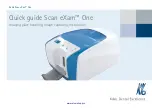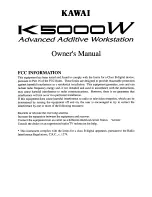
Introduction to the DS2 Docking Station
DS2 Docking Station
4
INDUSTRIAL SCIENTIFIC
Version 9.1 (P/N: 17112798)
2.2. Features
Features of the DS2 Docking Station include the following.
Ability to operate from a stand-alone PC.
Ability to handle up to 100 Instrument Docking Stations (IDS) with one Docking Station
Server.
Three (3) separate gas inputs on each IDS.
Ability to share up to 14 discrete gases for calibrations when IDSs are clustered together.
Built-in Smart charger on each IDS for rechargeable instruments.
Simplified feedback on the IDS via 3 LEDs (red, yellow, and green), and an audible
alarm.
A graphical user interface tool (DSSAC) that allows an administrator to view operations
on each IDS from a network computer.
Ability to schedule calibrations, bump tests, diagnostic tests and datalog data downloads
globally for all IDSs, or on an instrument-specific basis.
Multi-lingual user interface (English, French, Spanish, or German) on the IDS display as
well as in the DSSAC application.
Storage of instrument data in a central database.
Option to use the Industrial Scientific supplied run-time database or the customer’s own
existing Microsoft
SQL Server.
Option to implement Industrial Scientific Corporation’s Instrument Network (iNet).
Optional iGas configuration for automatic configuration of gas cylinders on an IDS.
2.3. Components of the DS2 Docking Station Network
The DS2 Docking Station network consists of at least three (3) components:
a Docking Station Server (DSS)
the Docking Station Server Admin Console (DSSAC) application
multiple Instrument Docking Stations (IDSs).
Refer to Figure 2-2. An introduction to each of these components can be found in the next three
sections.
2.3.1. Docking Station Server (DSS) Overview
The Docking Station Server (DSS) is a computer that controls the entire DS2 Docking Station
system, including all of the IDSs on the Docking Station Network. The DSS sends information
to, and retrieves information from, IDSs and the instruments docked in them. IDS and
instrument data, such as calibration and bump test results, are stored in databases that are
controlled by the DSS. Refer to Figure 2-2.
The DSS is administered using the Docking Station Server Admin Console (DSSAC) application.















































